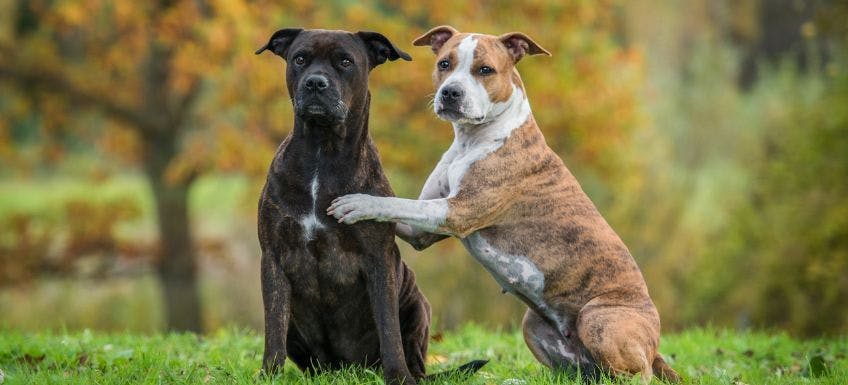
American Staffordshire Terrier
Affectionate
Protective
Apartment Friendly
Playful
High Energy
Breed Snapshot
- Weight: 25 - 35 kilograms
- Height: 43 - 48 cms
- Breed Size: Medium
- Lifespan: 12 to 14 years
- Dog Breed Group: Terrier
- Coat Type: Short, smooth coat.
Description
The American Staffordshire Terrier, a breed born and bred in the USA during the 19th century, is a medium-sized dog that boasts a strong and muscular build, complemented by a glossy, short coat that exudes radiance. Their well-built physique, broad head, and powerful jaw showcase an athletic and agile demeanor that simply commands attention.
Characteristics
Famous for their unwavering loyalty, remarkable courage, and impressive intelligence, these adaptable dogs thrive in a range of environments, whether in a family with kids, single households, or even apartment living. Their protective nature towards their owners makes them fantastic guard dogs, while their affectionate and family-oriented nature make them the perfect addition to any home.
Health Problems
Despite their resilience, American Staffordshire Terriers are prone to certain health issues such as hip dysplasia, skin allergies, and congenital heart disease. Thus, it is crucial to maintain regular visits to the veterinarian to catch any potential health problems early and treat them effectively.
Exercise
To maintain their physical and mental health, these dogs require regular exercise and activities such as long walks, running, and playing fetch. Their behavioral well-being is significantly tied to their exercise, hence the importance of providing them with plenty of opportunities to stay active.
Grooming
Grooming this breed is an easy task, as their short coat requires occasional brushing and bathing to keep it shiny and healthy. Regular grooming can also aid in moderating their moderate shedding.
Living Environment
American Staffordshire Terriers adapt well to different living environments. However, they thrive best in homes with a yard where they can play and exercise regularly. While they can live in apartments, they require adequate exercise and mental stimulation to prevent any behavior problems.